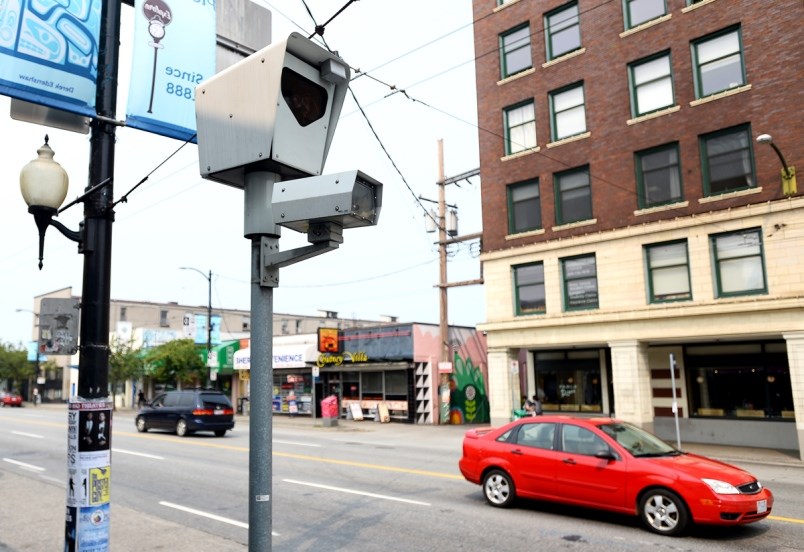Six city intersections will soon be home to red-light cameras, capturing photos and handing out fines to those who pass through after they’re allowed.
With the concept approved by council last year, city officials announced the locations Thursday morning.
Cameras will begin operating “sometime in the fall” at:
- Wellington Street East at Wyndham Street South (Ward 1)
- Eramosa Road at Stevenson Street North (Ward 2)
- Speedvale Avenue West at Dawson Road (Ward 3)
- Imperial Road at Willow Road (Ward 4)
- Scottsdale Drive at Stone Road West (Ward 5)
- Clair Road West at Gordon Street (Ward 6)
Additional locations may be added in two or three years if information shows they’re justified, states Steve Anderson, the city’s manager of transportation engineering.
“In a perfect world, there’s no tickets issued,” he said. “We’re not trying to set these things up to catch people. We want to be very transparent and let people know they’re coming. At the end of the day, it’s reducing the amount of injuries on our roadways, not the amount of fines we generate.”
Locations were chosen based on previous collisions and conditions near the road such as sightlines blocked by trees or utility poles, driveway placement, hills and overhead power cables. It’s only coincidental there’s one planned for each ward, Anderson explained.
“We didn’t specifically set out to target one per ward, it sort of worked out that way,” he said, noting that after ward boundaries change next year there will be two in Ward 2 and none in Ward 1. “Spreading them out increases the overall effectiveness of them as opposed to concentrating a whole bunch in one area.”
Studies show red-light violation rates can be cut in half within a few months of cameras being installed, and that right-angle collisions can be reduced by more than a quarter, notes a news release.
“We’re implementing these as a tool to try to significantly reduce the number of right-angle collisions and thereby, hopefully, reducing the severity of our collisions,” said Anderson.
The cameras will be live 24/7, taking photos of vehicles that enter the intersection after the traffic signal turns red. When violating vehicles are identified, the registered licence plate holder will receive a ticket in the mail within 30 days.
Vehicles entering the intersection on a green or amber light will not be photographed and tickets will not be issued for those making legal right and left turns.
In addition to the fines themselves, red-light cameras act as a deterrent to those who hope to shave a few seconds off their travels by ignoring the rules of the road.
“It wouldn’t take too many times getting a $325 fine to hopefully get people to change their driving behaviour,” Anderson added.
As there is no definitive proof of who is driving, as there would be during a police-initiated traffic stop, violations do not come with demerit points.
The cameras were previously expected to be up and running by this summer or early autumn but that was delayed by efforts to confirm the appropriateness of sites with the vendor, Anderson explained.
“In some cases, we had to visit a site a few different times to confirm the suitability of it.”
Council approved the cameras in December as part of the 2021 city budget process. The idea was endorsed in 2019 with a plan to install them in 2022, but a money-saving opportunity presented itself if it happened sooner.
Doing so is anticipated to reduce the cost by $330,000 over the seven-year contract, notes a November staff report to council.
The city will spend $112,400 on the cameras this year, with an equal amount anticipated in revenue, which is expected to increase in future years.
The program is expected to result in more tickets being handed out for running red lights, accompanied by an increase in related court processes. Court services officials believe they can handle the 2021 workload increase but anticipate an additional full-time staff member will be needed in 2022, states the November report.
The city launched an awareness campaign on April 30 known as “Don’t Rush The Red,” encouraging people not to drive aggressively and alerting them to the pending arrival of red-light cameras.
“As we get close to activating these, then we’ll be getting some targeted messages out again,” said Anderson.
